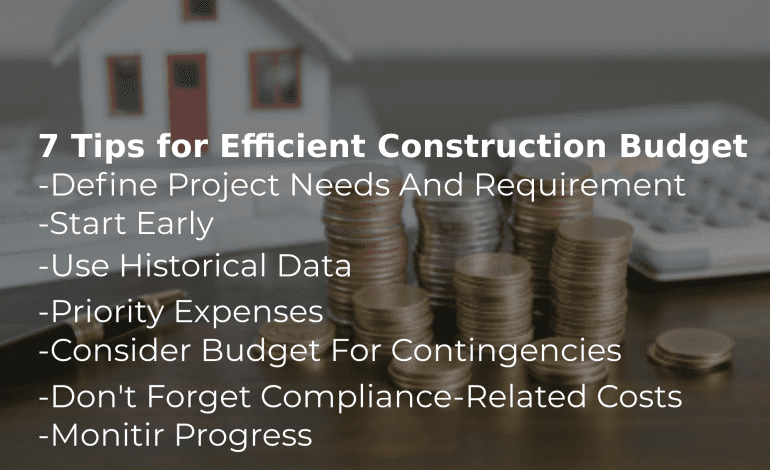7 Tips For Efficient Construction Budgeting

Budgeting for construction projects can seem daunting, given their immense size and complexity. Dividing the budgeting process into discrete steps, with assistance from construction budget management software, helps alleviate these concerns.
1. Define Project Needs And Requirements
The project plan, construction specifications, and statement of work (SOW) feed into the initial phase when all equipment, labor, and material requirements for the project are assessed. Things like permits and consulting fees should also be identified and documented. Clearly defining the big picture helps project managers and other decision-makers allocate funds appropriately and align with client expectations.
2. Start Early
With so many unknowns early in the project, it is natural to put off budgeting tasks until after the preconstruction planning phase. Waiting too long to begin construction budget management can introduce problems since you may discover unexpected issues, costs, or imbalances within the budget after it is too late to change strategies and get costs aligned with stakeholder expectations.
3. Use Historical Data
Past project budgets can be a useful resource during the budgeting process. Budgets from projects of a similar type and scope might reveal cost categories you had not considered during the early planning stages. Historical budgets also show you where expenses have been underestimated or overestimated in the past, providing clues that help you create a more accurate and complete budget. Having a construction reporting system in place to compare historical and current budget data is the best and most innovative way to extract valuable information from the data.
4. Prioritize Expenses
For any construction project budget, some costs are unavoidable, while others fall into the discretionary or “nice to have” category. Prioritizing expenses to make these important distinctions helps to identify costs that can be delayed or eliminated if the budget is getting off track. As the project progresses, these priorities determine which critical items directly impact a successful project completion.
5. Consider Budget For Contingencies
The unpredictable nature of contingencies can make this part of the budgeting process difficult. Too little money allocated to the contingency fund introduces project risks, while too much can be interpreted as padding the budget or reserving funds that could be allocated elsewhere. Thorough upfront review and historical data help to set an appropriate contingency budget.
6. Don’t Forget Compliance-Related Costs
Almost all types of budgets in construction management will need to allocate funds for compliance costs. The relevant regulations and expenses will vary based on the type of construction project, location, zoning, and specific protections in place. These costs are likely to include things like environmental assessments, required inspections, permits, and safety training. Since the cumulative cost can be significant, these compliance-related costs should also be reviewed as early as possible.
7. Monitor Progress
It is important to remember that budgets are living documents that change throughout the construction project lifecycle. The actual cost for each line item should be continually monitored, using scorecards and other user-friendly tools to review the data and identify unexpected variances quickly. Construction analytics software makes it easier to monitor progress and generate useful dashboards to share the latest status with all stakeholders.
Copyright 2022. Craftwood Construct Ltd By Kellin Tech Solutions. All Rights Reserved

Leave A Reply